This great typography pillow is hand block printed by Stacy & Mark at 1Girl1Boy. They also have square coasters, little wristlets, pouches and moleskine notebooks, all with the same design. You can see it all in their Etsy shop.
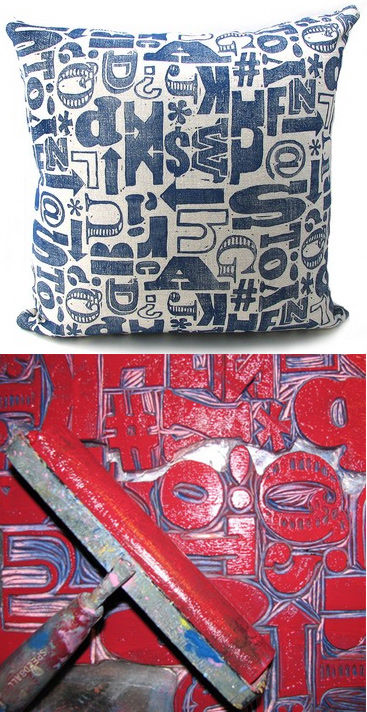
This great typography pillow is hand block printed by Stacy & Mark at 1Girl1Boy. They also have square coasters, little wristlets, pouches and moleskine notebooks, all with the same design. You can see it all in their Etsy shop.

When I came home all excited about my laser cut pop-up book, my husband Harold wanted to know what else I could cut. He’s done a fair amount of woodworking, so I thought I’d cut letters or symbols out of some exotic woods and make pendants and then necklaces with suede or leather cord. Should be easy — right?
![]() Of course nothing goes quite as planned! Harold cut the wood down and had a friend plane it to 3/16″ thick but then some of it (zebrawood) wouldn’t cut (it just burned up). Then I had to figure out how to make pendants — I haven’t made jewelry before with its new vocabulary (why are the little metal rings and bails and such called “findings”?). I found some tiny screw-in bails on-line and waited anxiously for them to arrive. Harold obligingly used his drill press to put teeny-tiny 1mm holes in the tops of the pendants. But the bails only came in silver which didn’t look right with the dark leather cord I had. Spray painting the bails black wouldn’t work, because the paint would just rub off right away. I inquired at the Tech Shop, where I’d used the laser cutter, if they had a powder coating set up (an electrostatic process that adheres power or dry paint to metal). They did, but there wasn’t a class scheduled, so in the meantime Harold found a heat-sensitive paint that fisherman use to paint patterns on their lures. I ordered the paint (and waited again for it to arrive).
Of course nothing goes quite as planned! Harold cut the wood down and had a friend plane it to 3/16″ thick but then some of it (zebrawood) wouldn’t cut (it just burned up). Then I had to figure out how to make pendants — I haven’t made jewelry before with its new vocabulary (why are the little metal rings and bails and such called “findings”?). I found some tiny screw-in bails on-line and waited anxiously for them to arrive. Harold obligingly used his drill press to put teeny-tiny 1mm holes in the tops of the pendants. But the bails only came in silver which didn’t look right with the dark leather cord I had. Spray painting the bails black wouldn’t work, because the paint would just rub off right away. I inquired at the Tech Shop, where I’d used the laser cutter, if they had a powder coating set up (an electrostatic process that adheres power or dry paint to metal). They did, but there wasn’t a class scheduled, so in the meantime Harold found a heat-sensitive paint that fisherman use to paint patterns on their lures. I ordered the paint (and waited again for it to arrive).
![]() To apply this paint, you heat the object with a propane torch then spray on the paint. In great anticipation I strung a few bails on a thin metal wire, heated them and sprayed. Oh no! The metal wire also got hot, and the paint adhered to the bail and the wire, fusing them together! Back to the computer to find heat-resistant (maybe Teflon?) wire. As I typed away at Google, Harold suggested I try using silver plated chain instead of leather and work on my chain-making skills (regardless of whether I used leather or silver chain, I was still going to have to attach a clasp). Certainly not rocket science, but would require some practice.
To apply this paint, you heat the object with a propane torch then spray on the paint. In great anticipation I strung a few bails on a thin metal wire, heated them and sprayed. Oh no! The metal wire also got hot, and the paint adhered to the bail and the wire, fusing them together! Back to the computer to find heat-resistant (maybe Teflon?) wire. As I typed away at Google, Harold suggested I try using silver plated chain instead of leather and work on my chain-making skills (regardless of whether I used leather or silver chain, I was still going to have to attach a clasp). Certainly not rocket science, but would require some practice.
![]() So that’s what I’ve done, used silver chain, leaving the powder coating lessons for another day. Below are pictures of the finished pendants. You can see more pictures by clicking on the image.
So that’s what I’ve done, used silver chain, leaving the powder coating lessons for another day. Below are pictures of the finished pendants. You can see more pictures by clicking on the image.
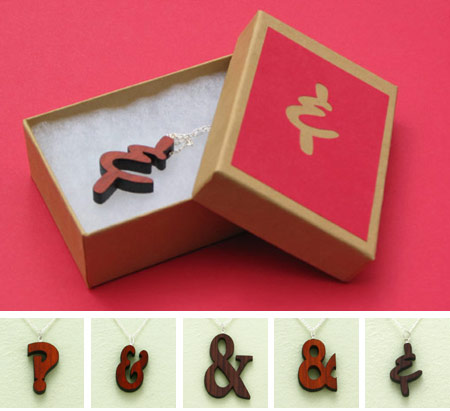
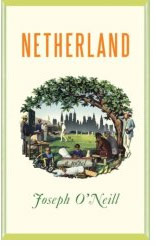 This week I read Netherland, a recent novel by Joseph O’Neill. It’s about, among other things, cricket, and not books. But when I got to the end I was unexpectedly happy to turn to a page that contained only “A Note on the Type” and a wonderful note at that:
This week I read Netherland, a recent novel by Joseph O’Neill. It’s about, among other things, cricket, and not books. But when I got to the end I was unexpectedly happy to turn to a page that contained only “A Note on the Type” and a wonderful note at that:
“This book was set in a modern adaptation of a type designed by the first William Caslon (1692-1766). The Caslon face, an artistic, easily read type, has enjoyed more than two centuries of popularity in the English-speaking world. This version, designed by Carol Twombley for the Adobe Corportation and released in 1990, ensures by its even balance and honest letterforms the continuing use of Caslon well into the digial age and the twenty-first century.”
Used to be most books had such notes, wish they still did.
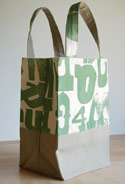 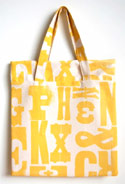 |
I’ve tried letterpress printing on lots of things — from the usual paper to thick coasters to book cloth to moleskine journals, and all the way to metal and wood. But I haven’t tried fabric yet. Piano Nobile over on Etsy makes these fabric totes, letterpress printed using wood type. My press doesn’t print a large enough area to cover fabric for a big tote, so I’ll just have to buy one of their bags! (But I’m also sure I’ll soon dream up a project that involves fabric!) You can see more of their textile prints on their website.
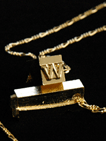 In a letterpress studio, the “hellbox” is the receptacle for broken or discarded metal type — it’s stored there until it can be melted down and recast into new type. Jeweler Erica Weiner had a work-study stint at New York Center for Book Arts and she saw the bucket of used type in their printing studio as a treasure trove for making necklaces. She gold-plates the discarded type and hangs it from a chain. Get yours here.
In a letterpress studio, the “hellbox” is the receptacle for broken or discarded metal type — it’s stored there until it can be melted down and recast into new type. Jeweler Erica Weiner had a work-study stint at New York Center for Book Arts and she saw the bucket of used type in their printing studio as a treasure trove for making necklaces. She gold-plates the discarded type and hangs it from a chain. Get yours here.